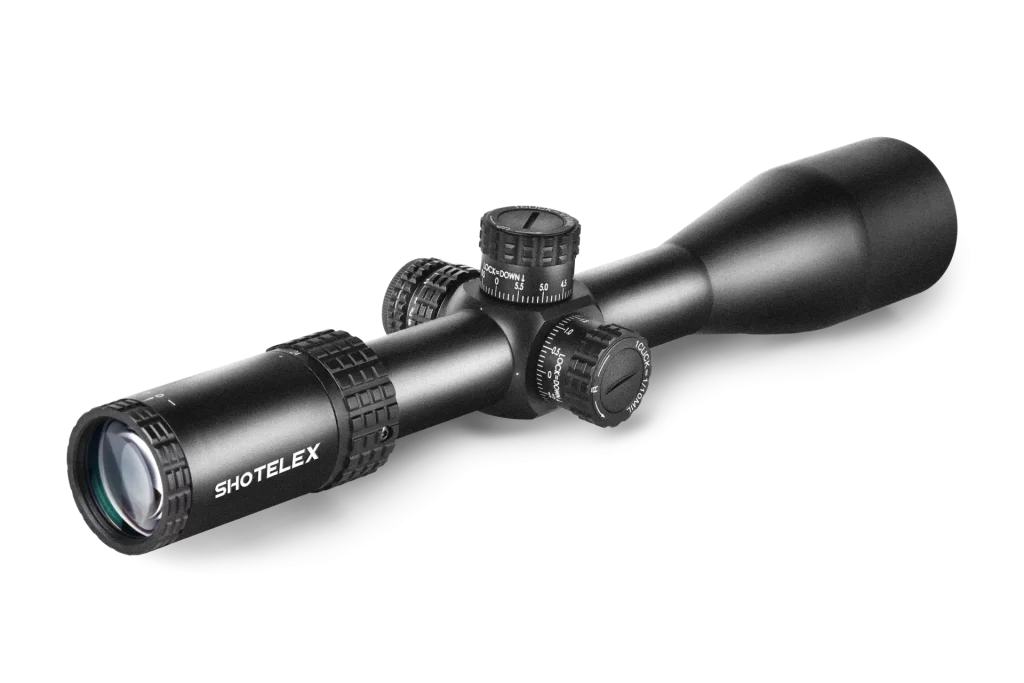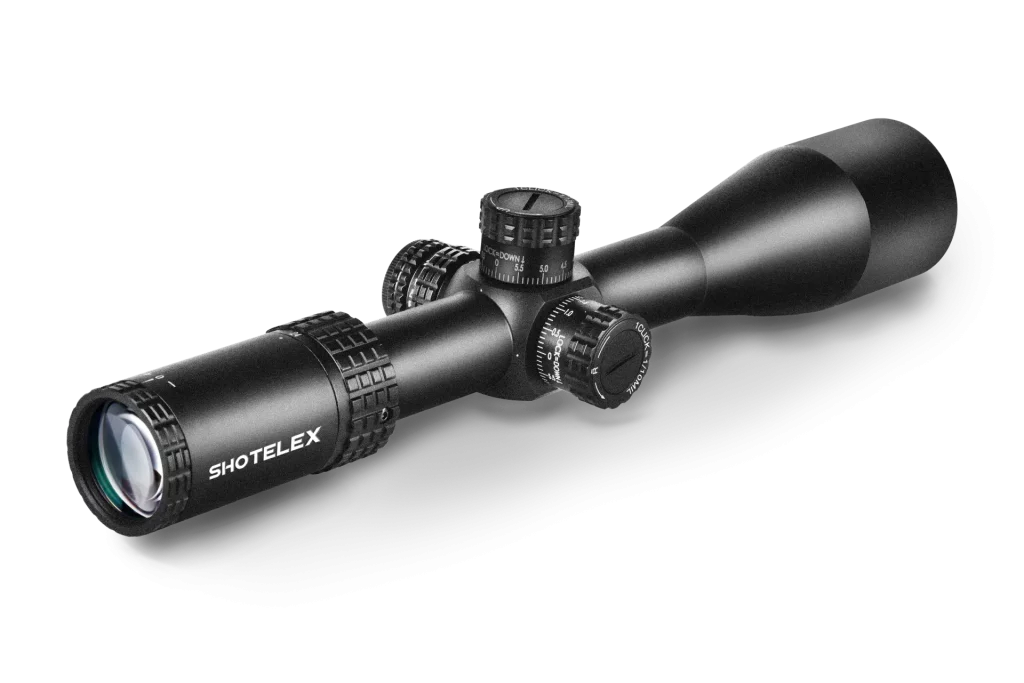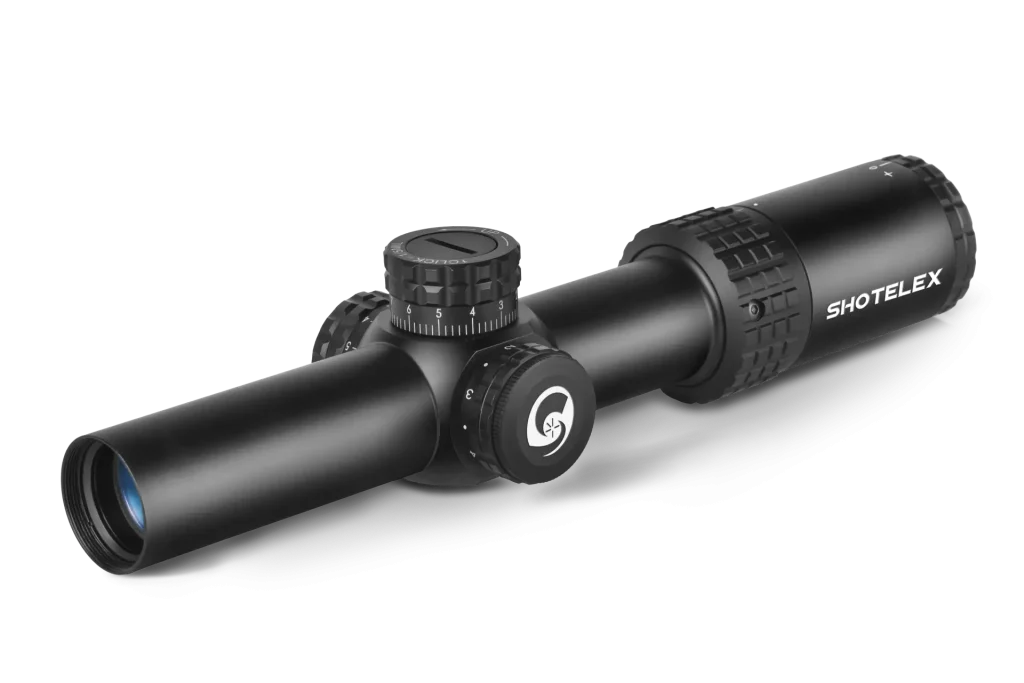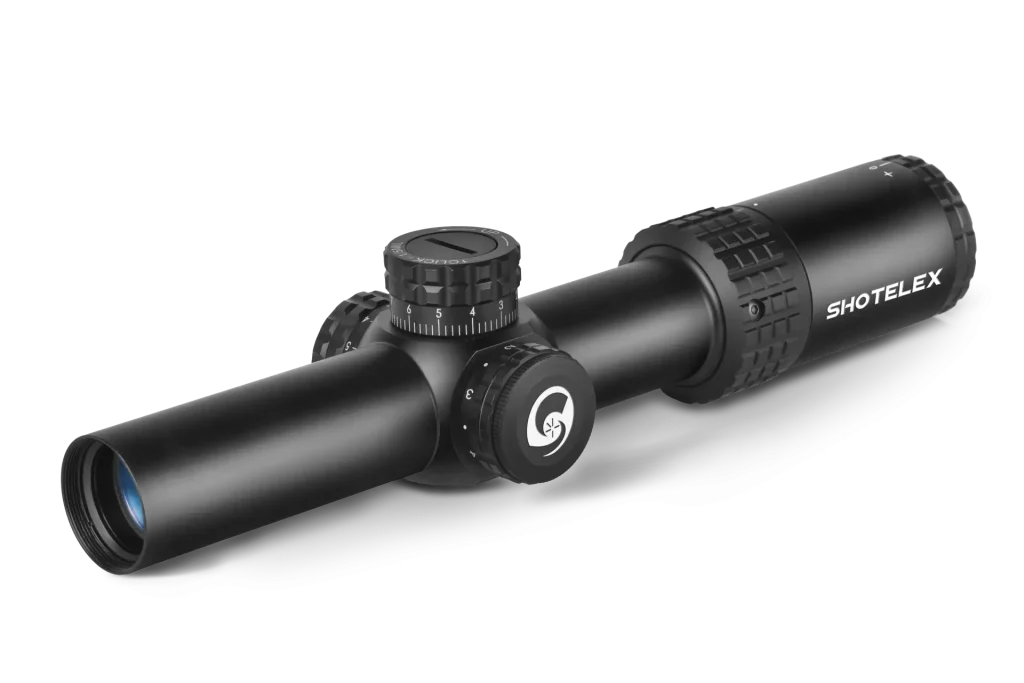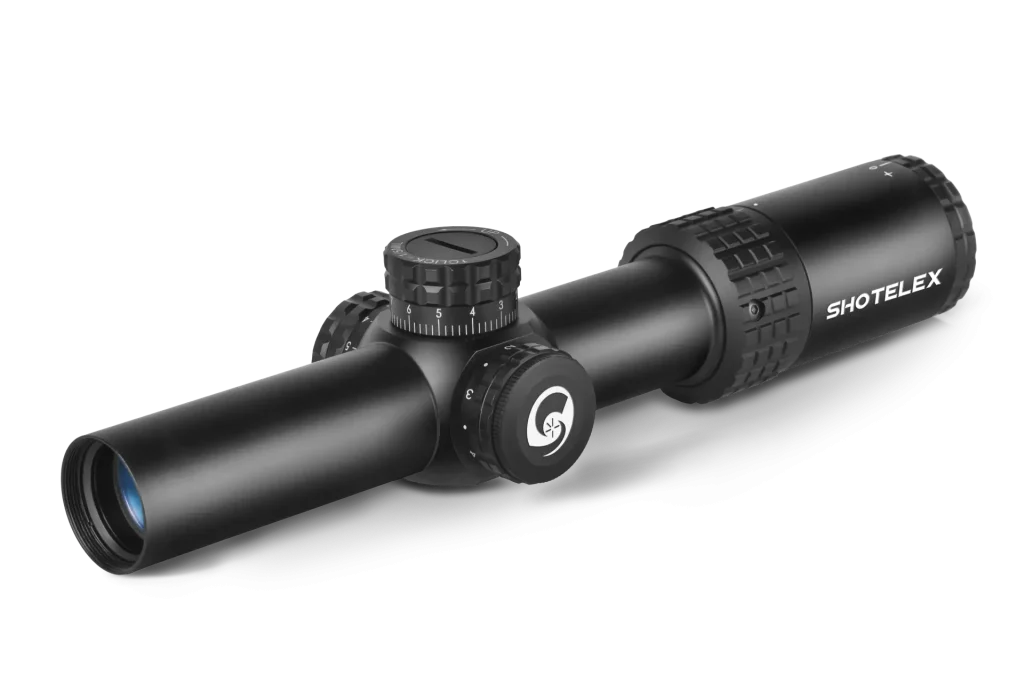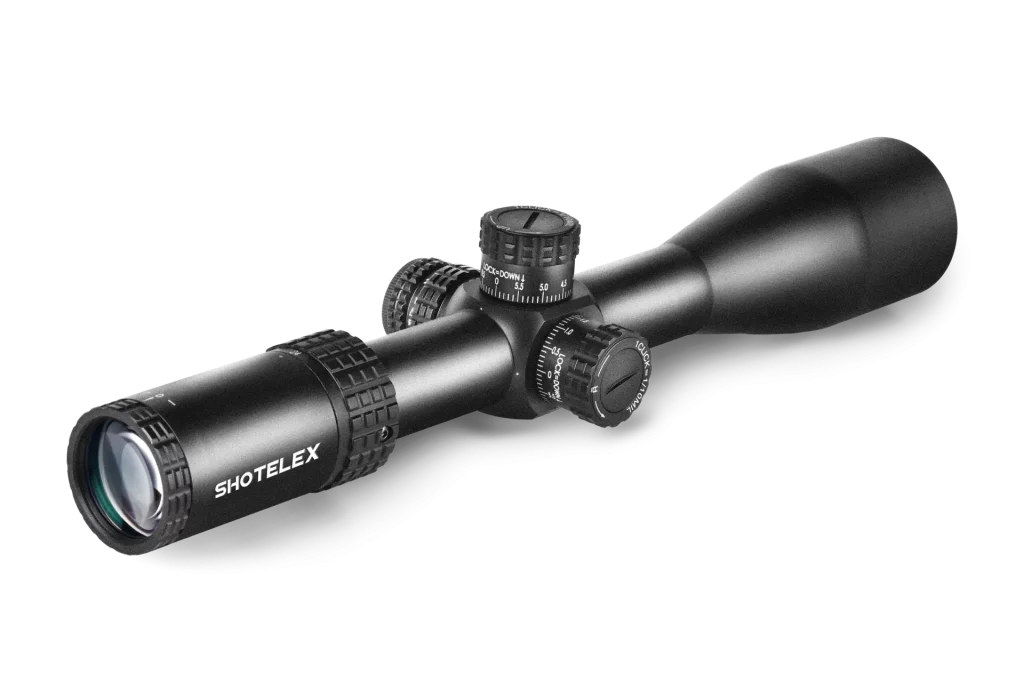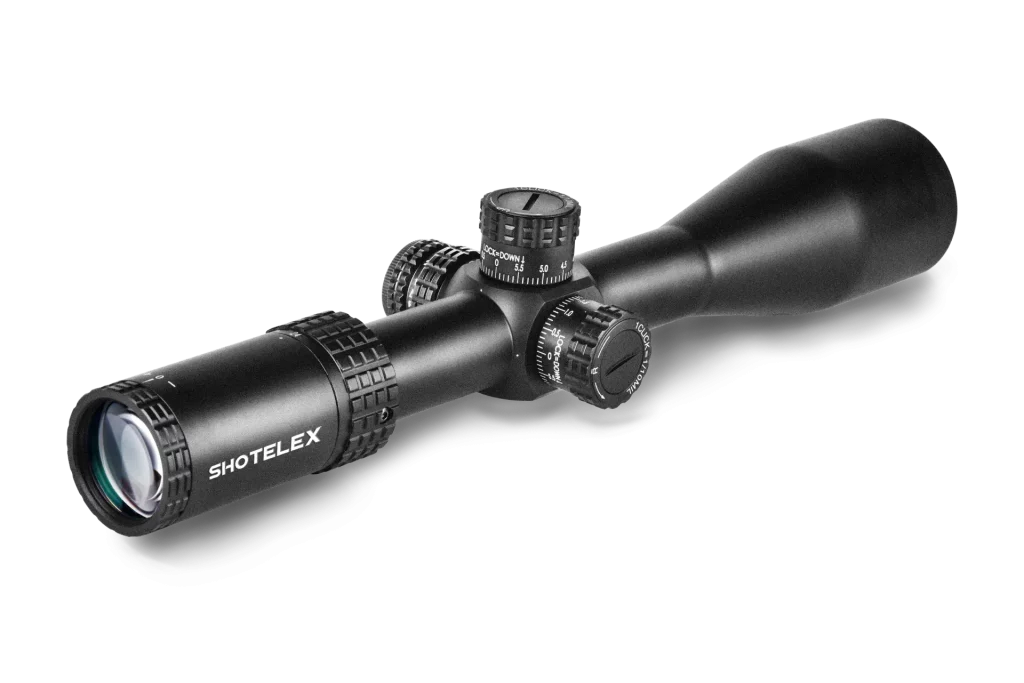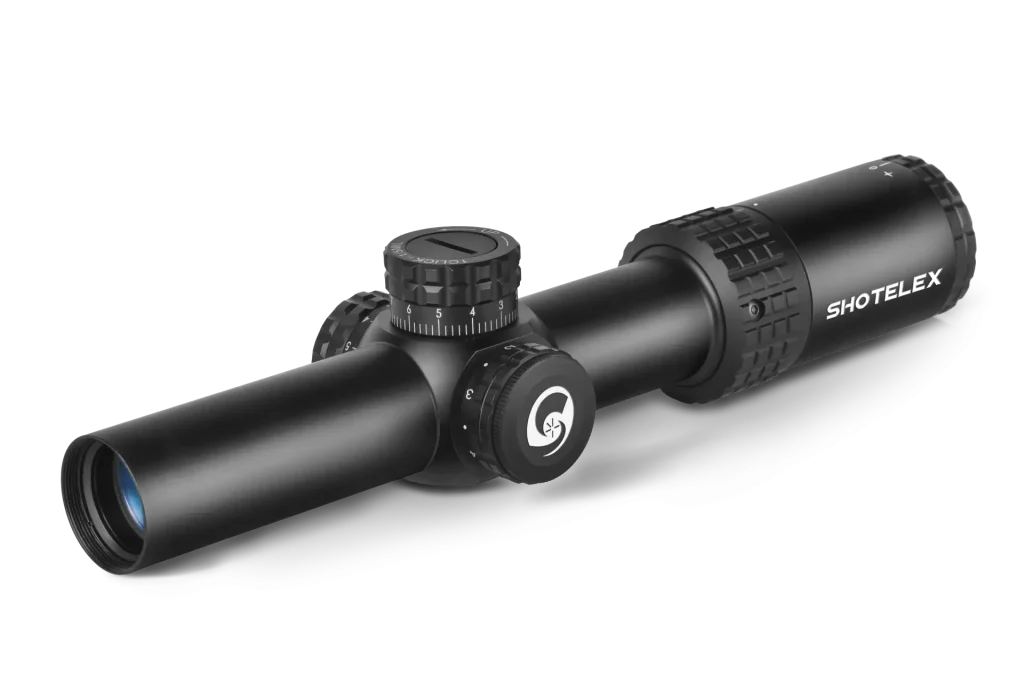How to Adjust a Rifle Scope? – 6 Easy Steps
The key to precise shooting with a rifle is to understand how to adjust the rifle scope before shooting. Adjusting your rifle scope is not difficult, but there are some small details that need to be aware of, especially when you’re in a hurry.
These are easily missed and can result in missed shots. In this article, we will discuss several effective and thorough ways to modify the scope of your rifle. Let’s start!
Part 1. Knowing More about Rifle Scope
Let’s take a closer look at the rifle sight first to better understand it before we start learning how to adjust it. It is important to know the parts and operations of the rifle, especially if you are a beginner.
- Objective Lens: Objective lens are the front lens that gathers light and focuses it.
- Ocular Lens: Ocluar lens are the rear lens through which you view the target.
- Turrets: Turrets are used to adjust windage (left/right) and elevation (up/down).
- Reticle: Reticle is the crosshair or aiming point within the scope.
- Parallax Adjustment: Its a feature on some scopes that allows you to adjust for parallax error at different distances.
- Magnification Adjustment: Magnification adjustment allows you to zoom in or out on the target.
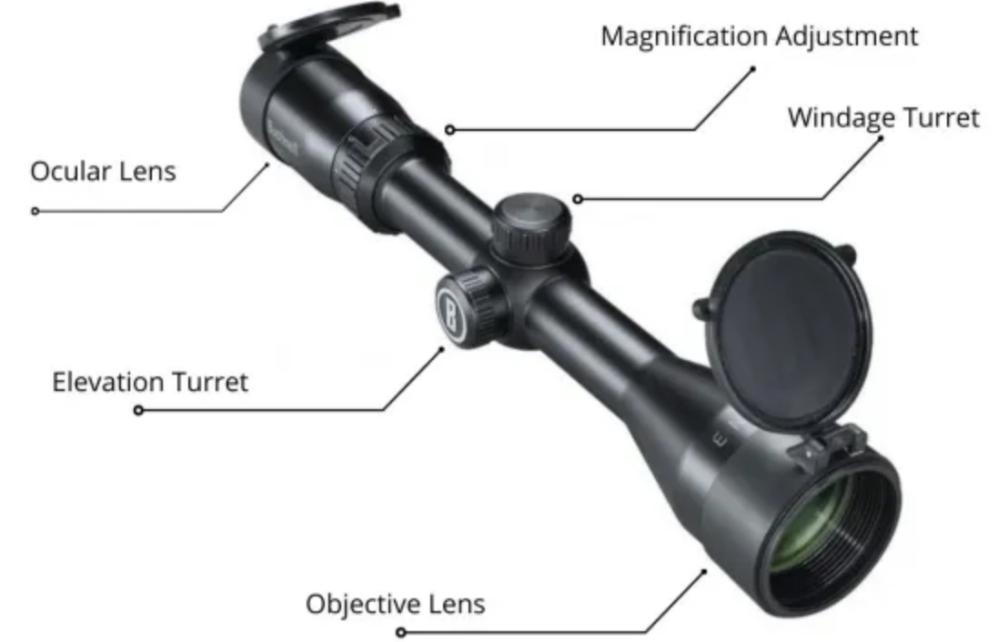
Part 2. How to Adjust a Rifle Scope?
1. Mount the Scope
Before adjusting the scope, make sure it’s properly mounted on the rifle. This is the initial stage of adjusting the scope. If the scope is not properly mounted, subsequent adjustments to the scope will also be affected.
Steps to Mount the Scope:
(1) Choose the Right Mount: Make sure you have the proper base and ring for your rifle.
(2) Level the Rifle: Place the rifle on a stable surface or use a gun vise to keep it stable and level.
(3) Install the Scope: Fix the scope ring on the scope and install it to the base. You need to align the scope with the barrel of the rifle.
(5) Tighten the Screws: To avoid misalignment, uniformly tighten the ring’s screws.
2. Establish a Zero
Next, you need to zero the rifle scope so that the bullet impact point is aligned with the aiming point at a specific distance.
(1) Choose a Distance: Generally, the zeroing distance for common rifles is 100 yards, and for rimfire rifles or air rifles, it is 25 yards.
(2) Use a Solid Rest: Use a bipod, sandbags, or a shooting rest to keep your rifle stable.
(3) Shooting Test: You can shoot 3-5 shots at the target without worrying if you are hitting the target.
(4) Measure the Error: Determine how far your shots are from the target’s center. Measure the horizontal (windage) and vertical (elevation) distances.
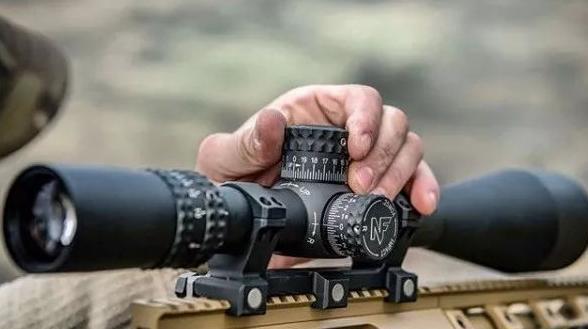
3. Adjust Windage & Elevation
Once you have fired a group and measured the error, now it’s time to adjust the windage and elevation to zero the scope.
- Elevation adjustment: Adjust the vertical alignment. If the shooting rate is low, you can adjust the elevation to the “up” direction. If the hit rate is high, you can adjust it to the “down” direction. Typically, one click is equal to 1/4 MOA, which is about 1/4 inch at 100 yards.
- Windage Adjustment: Adjusting the windage adjusts the horizontal alignment. If you are shooting to the left, turn the windage adjustment knob to the “right” direction; if you are shooting to the right, turn it to the “left” direction. As with elevation, one click usually equals 1/4 MOA.
4. Fine-Tuning Zero
After making the initial adjustments, fire another set of shots to confirm the adjustments, repeat the measurement and adjustment process until your shots consistently hit the center of the target.
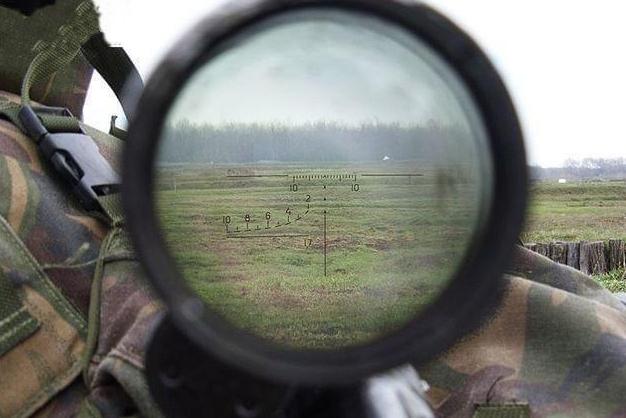
5. Adjust for Parallax
If your scope has a parallax adjustment function, you can also adjust the parallax to keep the reticle aligned with the target at different distances.
- Focus the Reticle: Look through the scope and adjust the eyepiece focus until the reticle is sharp.
- Adjust Parallax: Use the side or objective parallax adjustment to eliminate any shift in the markings when the head moves slightly. This ensures accuracy at different distances.
6. Record Settings and Keep Shooting Positions
After adjusting settings like windage and elevation, you need to keep a record of them in case they change or you need to re-zero them later. Additionally, it’s important to maintain a consistent shooting position to ensure reliable results.
Part 3. Why is It Important to Adjust a Rifle Scope?
Improve Shooting Accuracy
Adjusting the rifle scope can improve your shooting accuracy because it zeroes the scope and aligns the crosshairs with the point of impact, which increases the chance of hitting the target.
Moreover, adjusting the scope ensures that the target remains clear and focused, reducing the possibility of aiming errors due to misalignment between the eye and the scope.
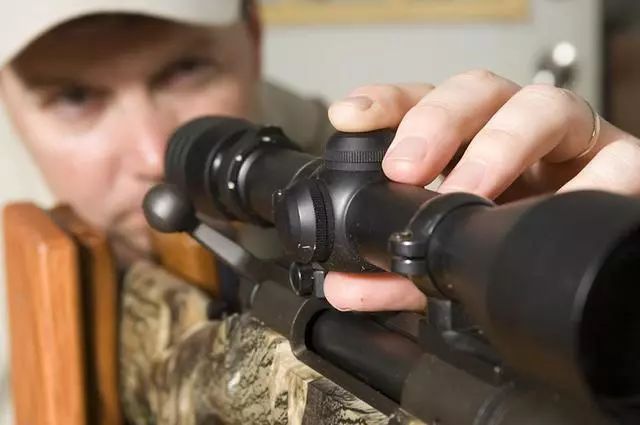
Improve Shooting Safety
Correct rifle scope adjustment can prevent misfires and reduce the risk of missing the target and hitting unintended objects or individuals. Additionally, adjusting the scope to the correct eye relief ensures comfortable and safe shooting, preventing the scope from biting and the recoil from shocking the shooter.
Part 4. More Tips to Adjust & Maintain Rifle Scope
Adjust Rifle Scope
- Understand the Scope: Since every scope is different, before adjusting it, you need to understand its functions and performance.
- One Step at A Time: When adjusting the scope, you need to pay attention to details and make small adjustments at a time.
- Take the Right Shooting Stance: When shooting, you can take the right stance, such as reclining down.
- Use the Right Ammunition: Different ammunition has different impact points.
- Regularly Check & Adjust: Changes in shooting can occur due to minor changes, so it is important to regularly check the scope adjustment.
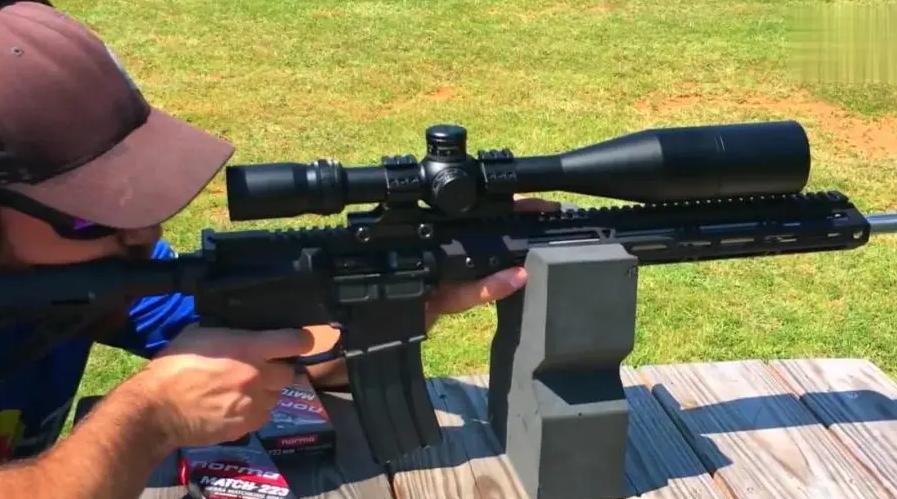
Maintain Rifle Scope
- Regular Cleaning: Keep the lens clean with a soft cloth and lens cleaner. Avoid touching the lens with your fingers.
- Check Mounting Screws: Check and tighten the screws on the scope mount regularly to ensure they are secure.
- Protect Scope: Use a lens cap to protect your gun from dust, moisture, and scratches when not in use.
- Store Properly: Keep your rifle in a dry, cool location. To prevent moisture damage, consider using a gun safe with a dehumidifier.
Final Thoughts
Learning to adjust a rifle scope is the first step towards effectively and accurately using a rifle. I hope you find valuable insights in this article. At the same time, if you’re looking for a better rifle scope, Shotelex is an excellent option. It has focused on scope research for years and is dedicated to providing users with outstanding products.
FAQs
1. What do the knobs on a rifle scope do?
The knobs on the rifle scope are also referred to as turrets. It’s used to adjust the point of impact for shooting, which can improve accuracy.
2. How many clicks to adjust rifle scope?
The number of clicks needed to adjust a rifle scope depends on the scope’s click value and the desired adjustment. Most scopes have a click value of 1/4 MOA (Minute of Angle) per click, meaning each click adjusts the point of impact by 0.25 inches at 100 yards. For example, to move the point of impact by 1 inch at 100 yards, you need 4 clicks.
3. What are the controls on a scope?
The main controls on a rifle scope include the elevation knob for vertical adjustments, the windage knob for horizontal adjustments, the parallax adjustment knob for correcting parallax error, the magnification adjustment ring for changing zoom levels, and, if available, the illumination knob for adjusting the brightness of the reticle.
4. What are the 3 dials on a scope for?
The three main dials on a rifle scope are the elevation knob for vertical adjustments, the windage knob for horizontal adjustments, and the parallax adjustment knob for correcting parallax errors at different distances. These controls help fine-tune the scope for improved accuracy and precision in various shooting conditions.

